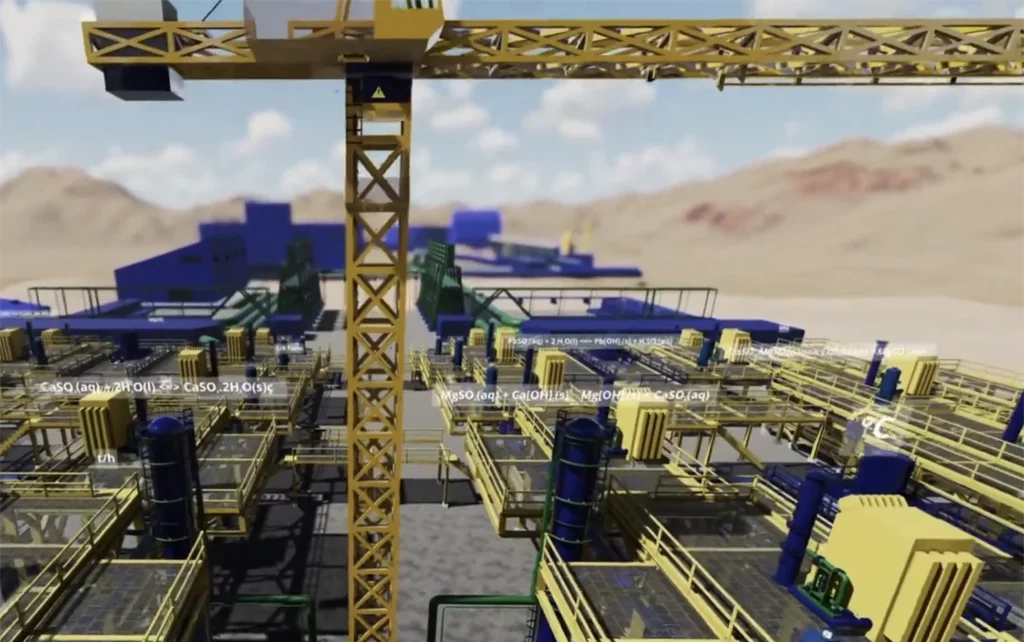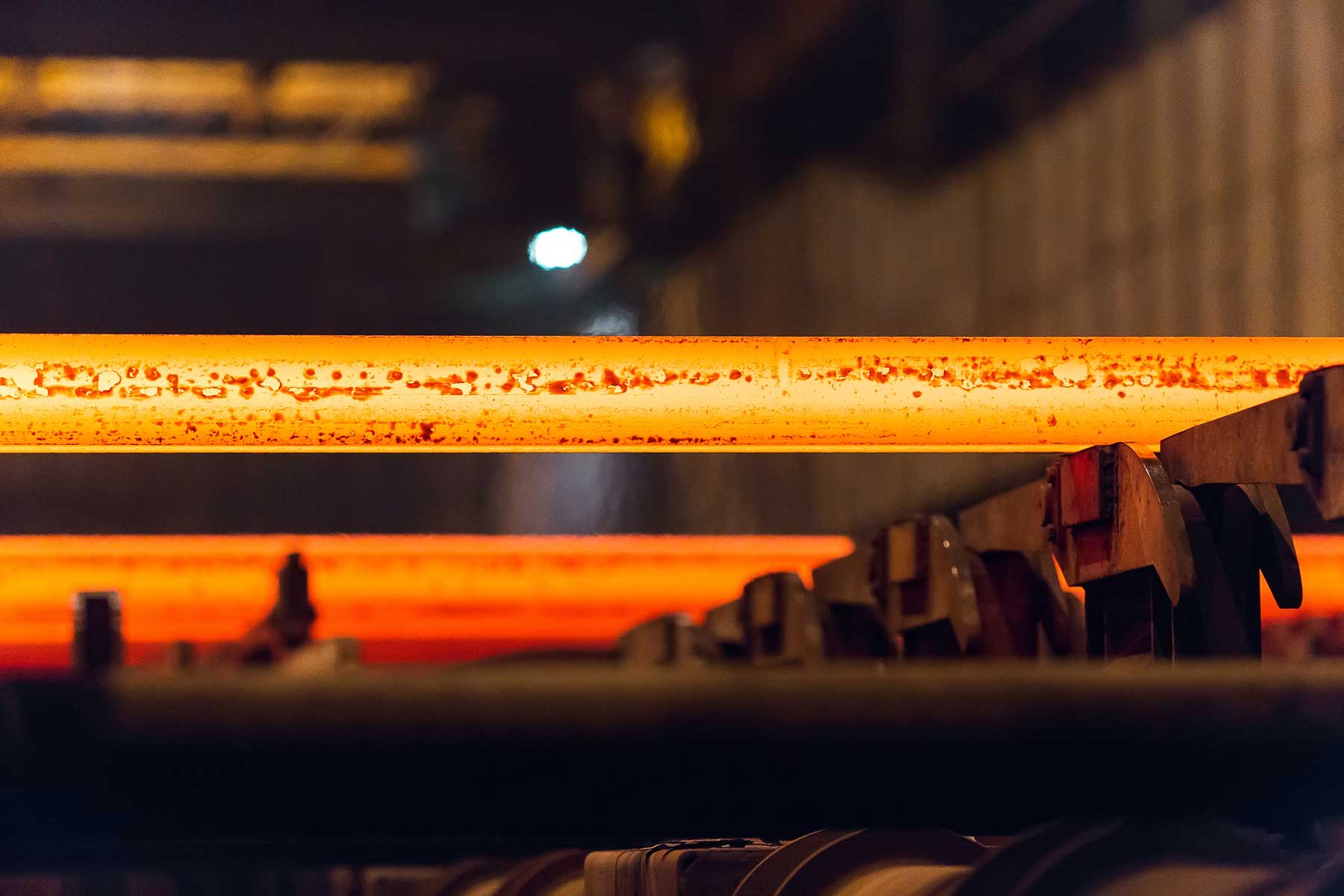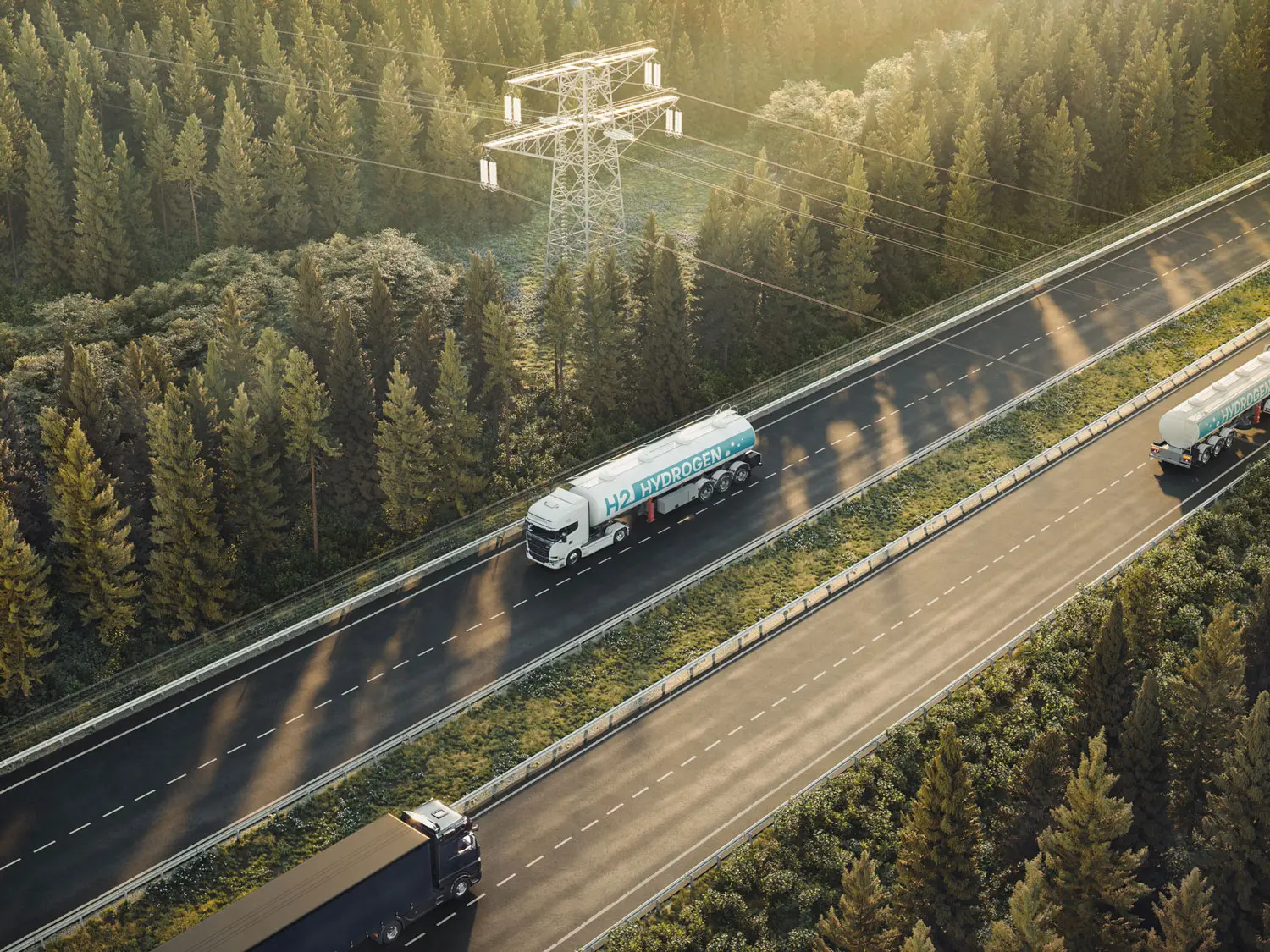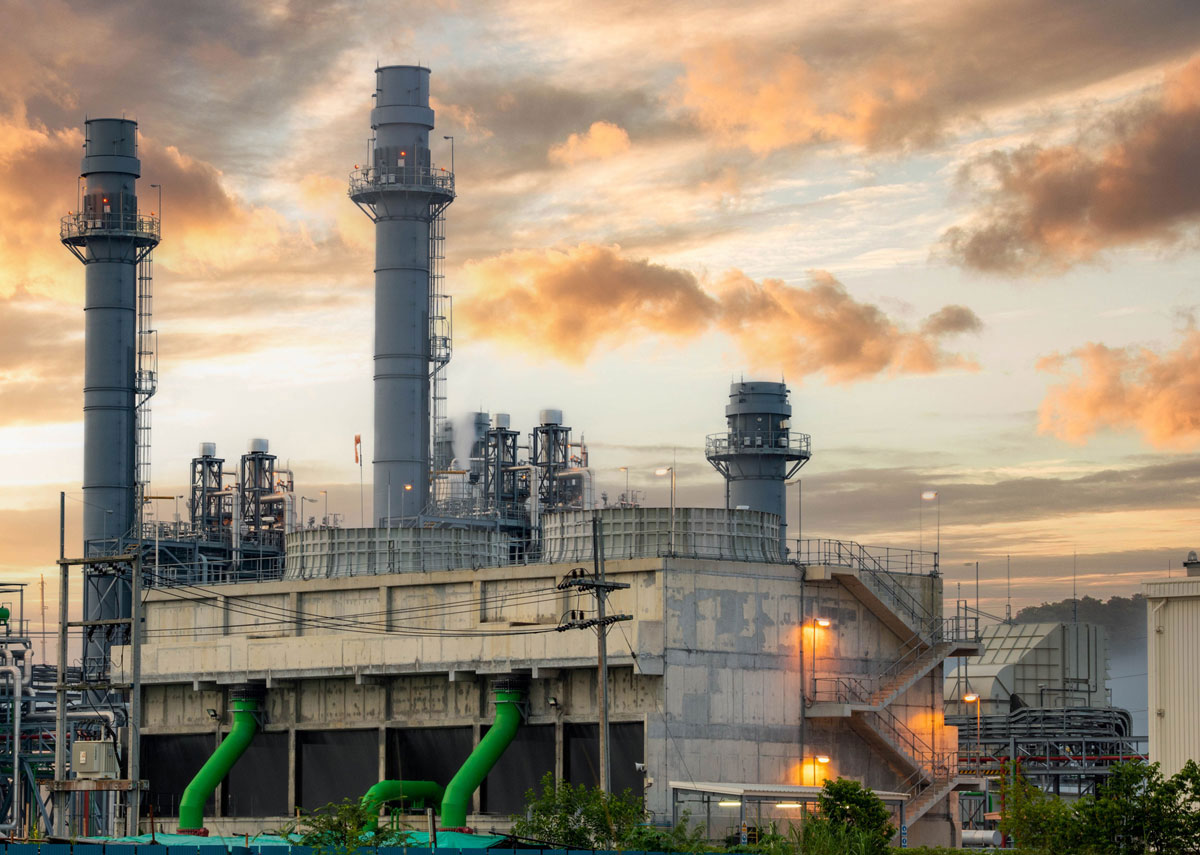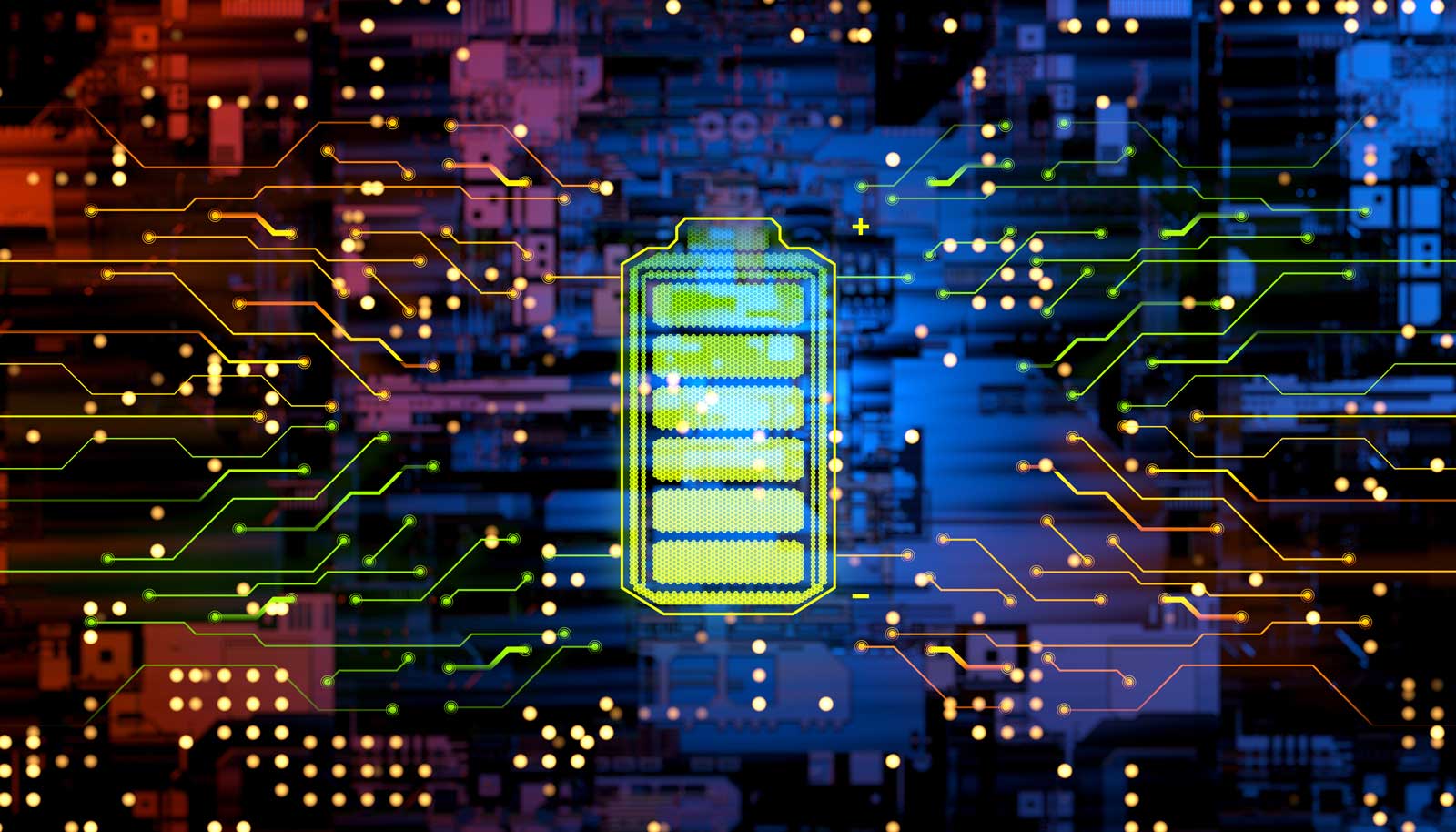In the mining and minerals sector, having access to in-depth data is imperative, and is becoming more so every day. To support efficiency and accurate decision-making, as well as meet a growing list of sustainability and compliance requirements, mining and minerals professionals need reliable, accurate data and insights at their fingertips.
About this guide
As global leaders in the development and implementation of digital twin technology for the mining and minerals sector, the team at Metallurgical Systems has prepared this guide. It will help you understand digital twins in greater detail, the benefits, and how and why your organisation should implement one. This guide will cover:- What are the different types of digital twins?
- Asset digital twin and process digital twin: key differences
- What is a metallurgical digital twin?
- Security: are there cyber-risks?
- Can digital twins be used as an ESG tool?
- Are digital twins now a ‘must-have’ technology?
- Why Metallurgical Intelligence® is the ultimate digital twin for mining and minerals
What is a digital twin?
- Physical object—can be anything from a small piece of machinery to a product, process or even an entire organisation.
- Digital replica—a digital representation of the physical object.
- The linking mechanism—a bi-directional flow of data between the physical object and the digital replica.
What is a digital twin in mining and minerals?
The function and nature of a digital twin will differ from industry to industry, and there are various applications. In mining and minerals, digital twins are typically used to provide a virtual model of an entire facility—enabling sophisticated decision-making, monitoring and reporting. This usually spans all processes and components of a mining operation, from pit to port.
A quality digital twin ideally will capture data from sensors, instruments, machines, telemetry and other sources and then rapidly analyse this data using high-performance computing to identify any anomalies or areas for improvement. This capture may involve automated integration of big data, dynamic simulation, machine learning, modern multi-dimensional database architectures and advanced data analytics and visualisations.
Without a digital twin, there is no accurate baseline from which to measure a facility’s day-to-day operations. This means mining and minerals professionals base decisions on piecemeal data or may wait until an incident happens—or a problem becomes highly visible—before they can address an issue.
Why implement a digital twin?
There are several reasons why digital twins are now top of mind for many businesses, especially in the mining and minerals sector:
Industry 4.0
Also known as the ‘fourth industrial revolution’, Industry 4.0 is a term that refers to the digital transformation of industries like mining, processing and manufacturing. There are several innovations and developments that underpin Industry 4.0, a few of which we will explore in more detail below:
- Growth in high-performance computing, and capacity to process huge amounts of data.
- Developments in artificial intelligence and machine learning, which enable data analysis at a scale never seen before.
- Availability of secure and reliable cloud storage, which can store huge data volumes and make information accessible from anywhere.
- Growth in IoT devices, which enable data to be automatically captured and processed from all kinds of locations.
- Edge technologies, which allow companies to utilise the benefits of the cloud while maintaining essential availability and uninterrupted access.
- Reduction in traditionally manual or tedious processes due to automation, which frees employees to focus more on analysis than administrative tasks.
- Increasing pressure on mining organisations not just to operate efficiently, but also to demonstrate their environmental, social and governance (ESG) credentials and proactively reduce emissions, waste and energy and water consumption.
As a result of these innovations, mining and minerals professionals are increasingly realising the vital economic and social benefits and the importance of digital transformation across the entire mining value chain.
Innovations in IoT
A digital twin requires the integration of data from multiple sources, the use of advanced algorithms to analyse and simulate this data, and the ability to interact with the real-world object or system in near real time. As a result, digital twins rely heavily on IoT devices to capture and submit data in near real time from, potentially, thousands of points across a facility. Improvements in sensors, instrumentation, machines and telemetry—and their increasing affordability—means setting up and managing IoT devices is now a much more reliable, secure and cost-effective process than previously.
Growing adoption of cloud across the mining sector
- Central, secure and reliable data storage.
- Ability to integrate data from other systems and other parts of the business.
- Cost-effective data storage and access.
- Ease of maintenance (the cloud environment being maintained by the vendor, meaning no additional effort required by the organisation’s IT team).
- Ability to scale quickly and effectively.
Improvements in computing and connectivity
The growth and availability of cloud services, as well as advancements in computing capability, means organisations can now confidently, securely and cost-effectively capture and analyse the huge data volumes that underpin a digital twin model. In the past, storing and accessing enormous volumes of data in the cloud would have come with considerable cost overheads—yet with innovations like data lakes, this is no longer the case.
Evolving compliance and sustainability requirements
As the world strives to achieve net zero carbon emissions by 2050, organisations are now under enormous pressure to meet a raft of regulatory requirements—especially those relating to their greenhouse gas (GHG) emissions, energy, and water consumption. This is particularly so for mining organisations—and a key reason to invest in a digital twin.
Without effective sustainability accounting and reporting in place, mining organisations of all sizes will struggle to meet these requirements. This will also affect their ability to maintain a licence to operate, control costs, secure finance, and attract and retain the next generation of environmentally conscious employees. According to a recent report by EY, environmental, social and governance (ESG) remains the top risk and opportunity for mining and metals companies in 2023.5
How does a digital twin deliver a return on investment?
- Greater efficiency—by automating the manual tasks associated with monitoring a plant’s performance, comparing data, and producing reports.
- Improved decision-making—owners and operators can make far more accurate decisions based on real-time, centralised data.
- Predictive maintenance and resolution—minor issues can be easily identified before they escalate and become costly and difficult to resolve, eliminating unplanned and unnecessary downtime.
- Real-time analysis—a digital twin will constantly identify opportunities for more streamlined or efficient processes, reducing bottlenecks.
- Enhanced compliance and governance—with a quality digital twin solution, data is retained securely and easily retrievable for compliance purposes, eliminating reliance on manual spreadsheets and calculations that carry the risk of non-compliance.
- Scenario testing—by testing and analysing a range of theoretical scenarios, owners and operators can identify optimal processes and plans.
- Testing and training—a digital twin can also be used to ‘test’ new equipment before it is installed on site (to determine its likely impact) as well as educating staff using simulation training.
What’s the difference between a digital twin and process simulation?
The main difference between a digital twin and process simulation is that a digital twin facilitates a continuous, near real-time, exchange of data between the digital replica and physical object.
Both digital twins and process simulation involve creating a digital model of an object or system. However, a digital twin has the advantage of receiving real-time (or near real-time) data based on an existing object or system.
A process simulation is a digital model using modelling software and is often used throughout a project’s life cycle. Process simulations don’t benefit from having real-time data and rely on synthetic or hypothetical input data derived using first principles, assumptions or historical data.
A digital twin is a virtual model that is built to reflect the physical object accurately. The physical object collects data sets from the IoT devices, and these data sets are applied to the virtual model, allowing multiple simulations to be run on (near) real-time data.
Given it is fed with real-world, (near) real-time data, a digital twin can provide a more comprehensive, dynamic and versatile simulation of the real-world process than one generated by a process simulation.
What is a digital model?
Steady-state simulation
Steady-state simulation modelling is used for process design and evaluation. It is based on first principles such as conservation laws and thermodynamics. Design conditions are manufactured and not always achievable due to real-world changes in raw materials, product specifications, and the inherent dynamic behaviour of process over time. Steady-state assumes that input variables are constant with respect to time, and there is no time-lag dependency or accumulation in the process where input is assumed to equal output.Dynamic simulation
While dynamic simulation models are also based on first principles, additional variables are applied such as kinetics. Unlike steady-state, dynamic modelling considers the mass and energy rate of accumulation within the process and calculates the time-lag dependency. It is the best modelling tool to capture transient conditions, real-time behaviour and batch and semi-batch processes. A digital twin for a mineral processing plant must contain the foundation block of a digital model that has been built using dynamic simulation to reflect the near real-time variations happening within the process.What are the different types of digital twins?
There are many different types of digital twins used across several industries. Each twin is built differently and has different applications. For mining and minerals, two distinct types of digital twin solutions are commonly used: asset digital twins and process digital twins.
Asset digital twins
An asset digital twin is a digital replica of the physical components of a mine site or a processing plant, developed using a 2D or 3D model and, in some cases, mathematical modelling. An asset twin is integrated with process control systems and other mine-planning systems to deliver real-time data to operations and may include 3D models for mine planning such as pit design, haul routes or mine layouts.
Asset twins can also be used to track the location and condition of an asset and to predict when maintenance will be required. They are made up of component twins, and can drill down to granular levels such as the components within the asset; for example, a sensor or actuator. They can be used to simulate the behaviour of the component and test how changes to the component would affect the rest of the performance of the asset.
An asset twin comprising multiple industrial assets that together form a complex system is referred to as a system twin.
A key benefit of an asset twin is it allows mining and minerals professionals to accurately determine the potential impact of any change to the physical asset—without the need to create physical prototypes.
Process digital twins
Process twins provide a digital replica of the process flow within the plant, developed using computer software. They are based on dynamic simulation of the process chemistry and thermodynamics of the plant. The dynamic model has automated integration with plant source data and performs a full plant-wide mass and energy balance that considers conservation laws, phase equilibria, heat and mass transfer and kinetics.
The mass and energy and rate of accumulation with respect to time provide unique insights into exactly what is happening inside the processing plant at any point in time. The integration and wait times for laboratory assays and the solver calculations mean the data from these simulations are delivered within hours. Process digital twins leverage IoT, big data storage and integration, machine learning and advanced database structures to deliver fast, actionable insights to stakeholders via dashboards and visualisation tools.
Asset digital twin and process digital twin: key differences
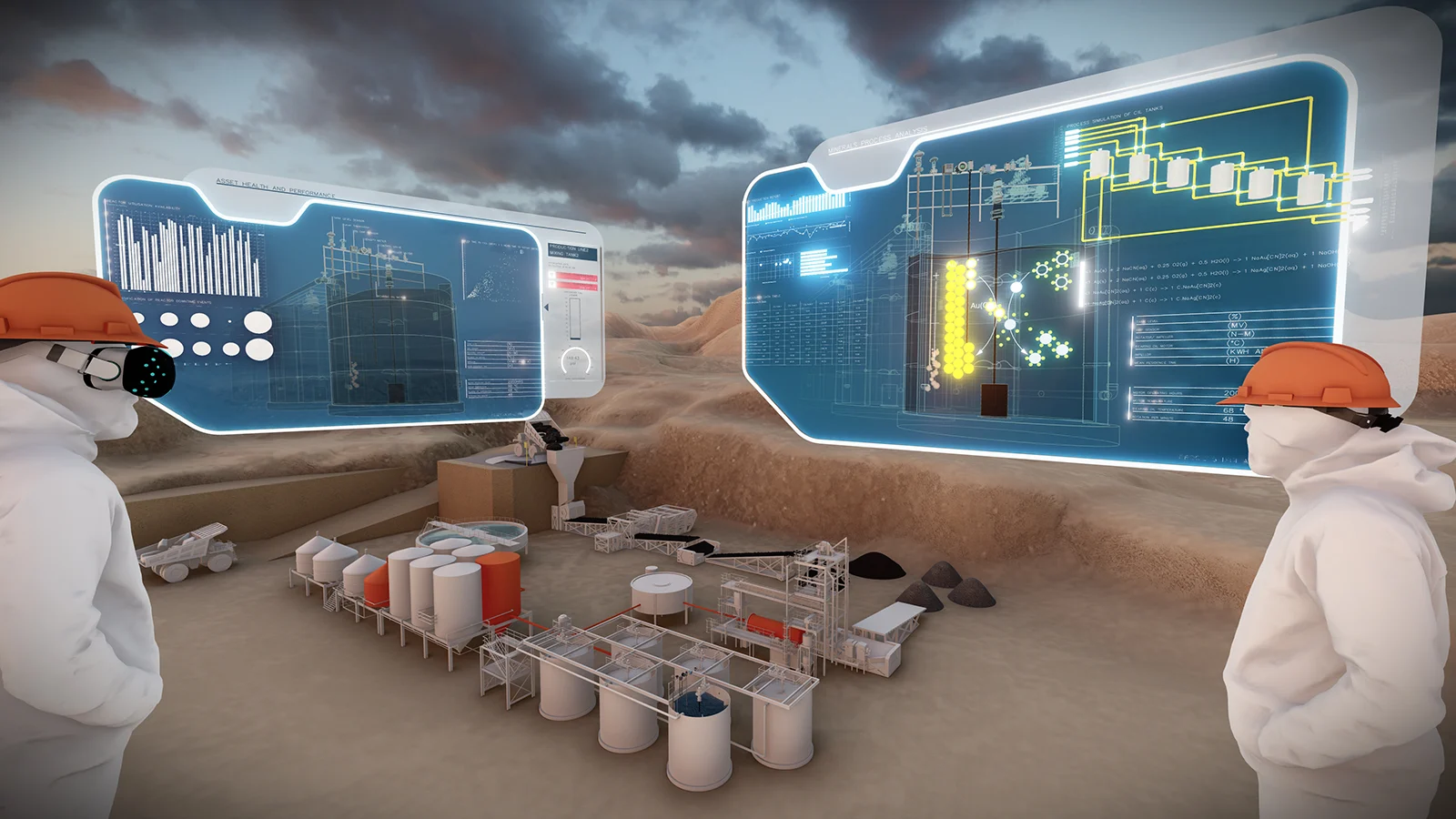 Asset twins and process twins do have some crossover in their application, yet have some notable differences. Process digital twins contain modelling and simulation of all assets within the processing plant—and are integrated with process control systems, data historians, and laboratory information management systems. This means they can simulate and calculate data even for streams where instrumentation and sensors may not exist. Process digital twins can be used as asset performance management tools to make better decisions about asset maintenance and replacement, equipment sizing, prevention of downtime and optimising asset behaviour. Process twins do not, however, contain a 3D model of the physical asset, but can drill down into granular data for that asset.
Asset twins and process twins do have some crossover in their application, yet have some notable differences. Process digital twins contain modelling and simulation of all assets within the processing plant—and are integrated with process control systems, data historians, and laboratory information management systems. This means they can simulate and calculate data even for streams where instrumentation and sensors may not exist. Process digital twins can be used as asset performance management tools to make better decisions about asset maintenance and replacement, equipment sizing, prevention of downtime and optimising asset behaviour. Process twins do not, however, contain a 3D model of the physical asset, but can drill down into granular data for that asset.
This table outlines some of the key differences:
| Asset digital twin | Process digital twin | |
| Data capture/ centralisation | IoT. SCADA. Control systems. Mine planning. Haulage and fleet systems. ERP. | IoT. SCADA. Control systems. Mine planning. Haulage and fleet. Data historians. Laboratory asset management systems. MES. Calculated process simulated data. ERP. |
| Data storage & integration | Cloud. APIs. Complex database architecture. | Cloud. APIs. Complex database architecture. |
| Analytical methods | Artificial intelligence. Machine learning. | Artificial intelligence. Machine learning . Time-dependent process modelling. Plant-wide mass and energy balance. |
| Modelling methodologies | 2D/3D modelling. Statistical analysis. Integrated data flow between the physical asset and the digital replica. | Statistical analysis. Integrated data flow between physical asset and digital replica. Ability to simulate different parameters/variables in a digital environment to assess outcomes using dynamic simulation. |
| User experience | AR/ VR. 3D immersive environments. Advanced dashboards and analytics. Geo-positioning of assets that can be integrated. | Dynamic process flow diagrams. User control panel. Advanced reporting and analysis tools. 2D representation of a processing plant using computer-based modelling – no VR or AR. Geo-positioning of assets that can be integrated. |
| Inventory tracking | Does not calculate inventory, which means you cannot accumulate or remove material. | Calculates changing inventory over time. |
| Granularity | Digital replica of the physical plant and the assets within the plant. Ability to drill down to the components and parts of the asset. | Digital replica of the process chemistry, thermodynamics and time-lag dependency at every step of the process. Insights into the assets and equipment in the processing plant. Ability to drill down to every stream and measure point, completing 720 iterations of a full plant-wide mass balance in 24 hours, using two-minute instrument data. |
| Components | Comprises part twins and component twins. Data can be modelled or predicted for real-time data. | Not comprising part or component twins. |
| Time | Real-time data from instrumentation and equipment. | Near real-time data to incorporate wait times on laboratory assays and process calculations from the solver. |
| Use cases | Monitoring the health of physical assets. Optimising equipment operations. Reducing costs. Preventing equipment failures. Enhancing safety. Managing risks. Planning for maintenance & repairs. Scheduling downtime. Experimenting with new design. | Asset management. Production reporting. Plant-wide mass and energy balance. Metallurgical accounting. Process optimisation. Sustainability reporting – sustainability indicators down to a product level. Scenario testing. |
What is a metallurgical digital twin?
A metallurgical digital twin is a name for a process digital twin that is specific to metallurgical processing. We can also call this a metallurgical process digital twin. It is a digital replica of the actual processing of the ore body for a minerals processing plant—from raw material to finished product. This type of digital twin uses dynamic simulation and considers a range of physical properties such as temperature, pressure and time-lag dependency. It’s also combined with the specific chemical equations and processes that occur at each step of the refining process. Machine learning, multidimensional and relational database structures, advanced data analytics and visualisations are all technologies used in a metallurgical process digital twin.
Security: are there cyber-risks?
Can digital twins be used as an ESG tool?
ESG reporting requirements for mining and metals
There is a range of different requirements for mining and minerals organisations, depending on their size, location and area of focus. In a recent article, EY suggests that meeting ESG requirements should be an urgent priority for organisations in the sector.
“ESG remains the top risk and opportunity for mining and metals companies in 2023. The issue is now firmly integrated within corporate strategies due to its impact on almost every aspect of operations,” the article says.8
The article also suggests that complying with new standards and expectations will require mining organisations to improve the availability, rigour, trust and availability of their data, and that “more rigorous reporting will become critical if companies are to meet growing stakeholder expectations and avoid accusations of ‘greenwashing’. Miners that achieve this can get an edge on competitors in many ways—from assessing capital to securing license to operate and attracting talent”.
Overall pressure to reduce emissions became more formal in 2022 when at the global COP26 conference (the UN’s 2021 Climate Change conference held in Glasgow), the International Financial Reporting Standards (IFRS) Foundation announced the formation of the International Sustainability Standards Board (ISSB). The aim of the ISSB is to create a comprehensive global baseline for sustainability disclosures. The driving force is investor demand for more transparent reporting of sustainability-related risks and opportunities.
The International Organization of Securities Commissions (IOSCO), which is the global body for securities regulators from the United States, Europe, Asia and elsewhere, is also expected to endorse these standards. This will require companies to publicly report annually on their emissions, demonstrating their commitment and strategies employed to reduce emissions.
The European Commission is also implementing policies to reduce net greenhouse gas emissions by at least 55% by 2030, and to achieve climate neutrality in 2050.9
As we discuss in this article, organisations will also soon be expected to comply with phase one of the world’s first carbon border adjustment mechanism (CBAM), which governs the importing of goods into the European Union. This legislation is set to be finalised in October 2023; Canada and the UK are considering similar policies.10 The CBAM aims to prevent ‘carbon leakage’ by requiring that certain groups of products from countries outside the EU incur a carbon levy. This levy is linked to the carbon price payable under the EU Emissions Trading System (ETS), when the same goods are produced within the EU.11 At this stage, this levy is likely to apply to iron and steel, cement, fertiliser, aluminium, electricity, chemicals, polymers and hydrogen.12 The overarching aim is to create green supply chains and reduce carbon emissions globally.
How can a digital twin help with meeting CBAM and other legislative requirements?
- Track their emissions, energy and water consumption in granular detail and with a high degree of accuracy—alleviating the need for time-consuming, manual and error-prone calculations and reports.
- Avoid unnecessary levies or penalties by providing authorities with robust, accurate and timely data based on real outputs.
- Test potential operational scenarios to proactively make improvements—essential in meeting rigorous future targets.
- Customise reports/data capture so they align with an organisation’s particular jurisdiction and location.
Are digital twins now a ‘must-have’ technology?
The concept of digital twins has been around for decades. However, digital-twin enabled-software emerged only around 2010. It then took around half a decade for digital twins to spread from aerospace and manufacturing to a much wider range of industries, including mining and minerals.
Companies that aren’t using digital twins are likely to soon find themselves at a competitive disadvantage. A MarketsandMarketsTM report found that the global digital twin market is projected to be worth US$73.5 billion by 2027 and is expected to have a CAGR (compound annual growth rate) of 60.6% between 2022 and 2027.15
Likewise, a McKinsey report released in late 2022 suggests that 70% of C-suite technology executives at large enterprises are exploring and investing in digital twins.16 This interest, combined with rapidly advancing supportive technologies, is driving market estimates for digital-twin investments of more than $48 billion by 2026—a 58% growth rate.
As a 2021 article in Time magazine suggested, “technology companies are rolling full steam ahead. Many of them believe digital twins will gain importance with the rise of the metaverse, a collection of connected virtual worlds that increasingly have an impact on—or even replace—what happens in the real world”. 17
Why Metallurgical Intelligence® is the ultimate digital twin for mining and minerals
Developed by the experts at Metallurgical Systems, Metallurgical Intelligence® is an award-winning and highly sophisticated digital twin solution. Via a single, easy-to-use dashboard, mining and minerals professionals get all the vital information they need to make smarter decisions, meet compliance requirements, improve revenue, uncover anomalies, identify efficiencies and eliminate risk.
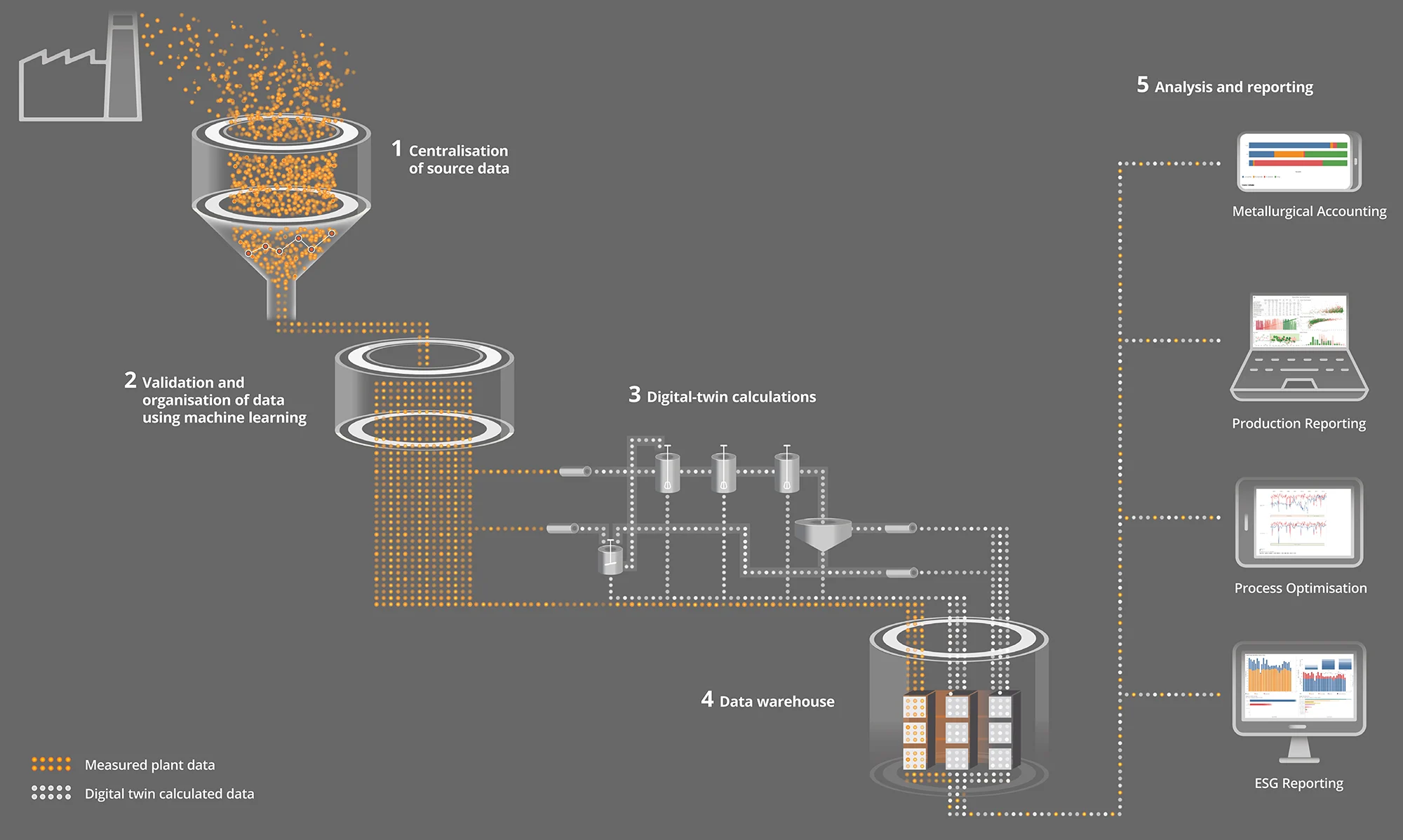
Importantly, Metallurgical Intelligence® also simplifies and streamlines everyday metals accounting and reporting processes, meaning metallurgists can spend less time on manual, error-prone data entry and more time analysing the data, solving problems and identifying opportunities. It’s also fully customised, captures thousands of data points, and has been adapted for every type of minerals processing technology, including concentrators, hydrometallurgy plants, smelters and refineries. Metallurgical Intelligence® leverages machine learning to analyse huge volumes of data and provide intelligent, automated insights that can help mining and minerals professionals make better, smarter decisions. As such, it offers transparent data recording that exceeds industry compliance guidelines (AMIRA P754) and supports complete, end-to-end auditing.
If you are interested in finding out more, please get in touch.
Want to learn more about how MI Core® can improve your site’s metallurgical accounting, production reporting, process optimisation and sustainability reporting?
- McKinsey, Digital twins: from one twin to the enterprise metaverse
- McKinsey, Digital twins: from one twin to the enterprise metaverse
- IDC, Creating Value with Smart Mining Operations, July 2022 [PDF]
- IDC, Creating Value with Smart Mining Operations, July 2022 [PDF]
- EY, The top 10 business risks and opportunities for mining and metals in 2023
- McKinsey, How digital innovation can improve mining productivity
- Northern Miner, Cyber threats on the rise for resource industries
- EY, Top 10 business risks and opportunities for mining and metals in 2023
- Consilium, Fit for 55: EU strengthens emission reduction targets for member states
- BCG, Navigating the European Green Deal
- WeForum, CBAM: The new EU decarbonization incentive and what you need to know
- Deloitte, EU Carbon border adjustment mechanism: CBAM
- Accenture, Accelerating sustainability with digital twins
- Accenture, Accelerating sustainability with digital twins
- Markets and Markets, Digital Twin Market
- McKinsey, Digital twins: from one twin to the enterprise metaverse
- Time, Digital Twin uses
About the authors
This article has been collaboratively authored by the team at Metallurgical Systems, and fact-checked and authorised by Managing Director and industry specialist John Vagenas.

